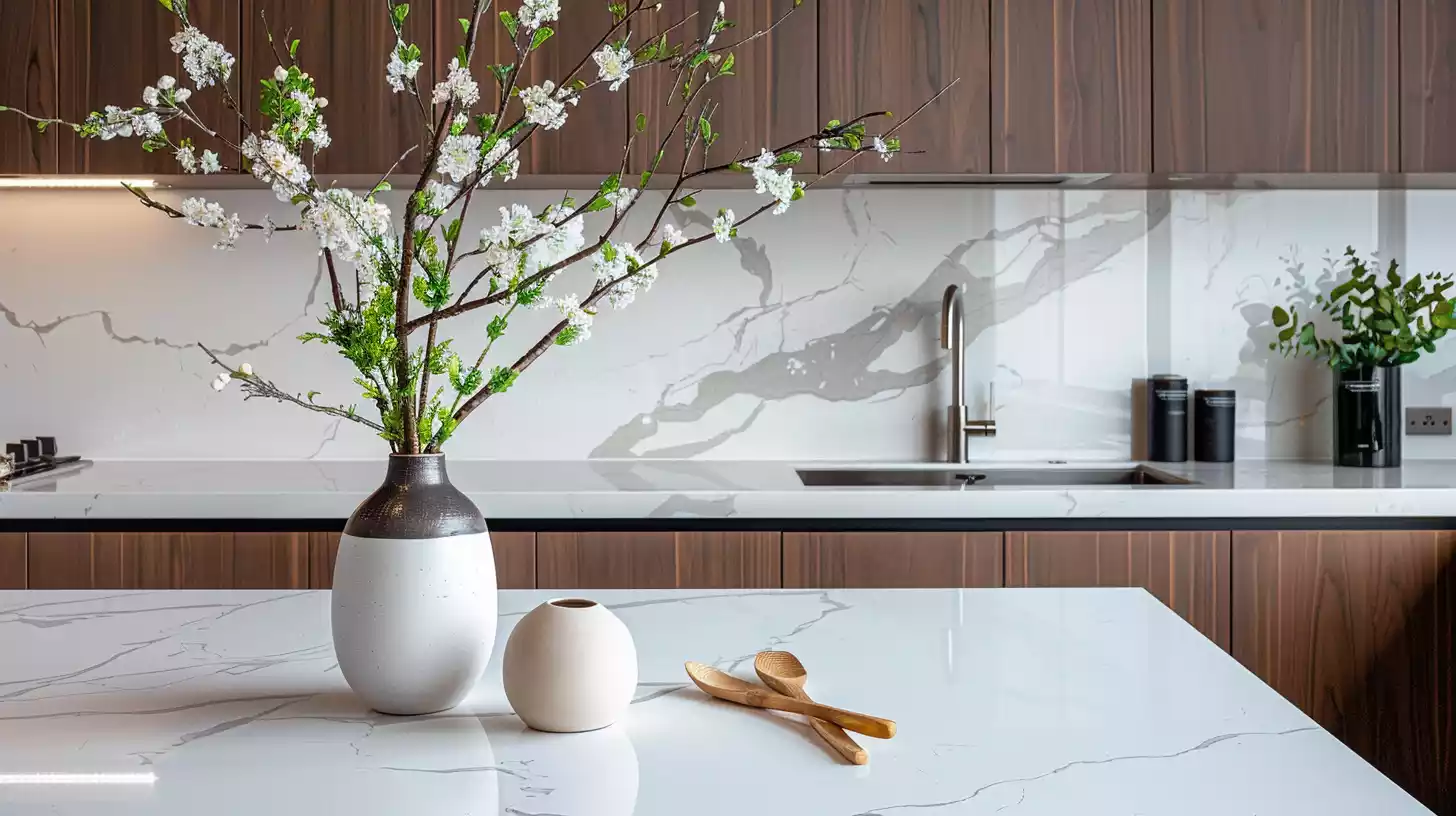Marble countertops infuse kitchens with luxury and sophistication, offering a timeless appeal and versatility in design. They remain cool to the touch, withstand heat, and can last for decades with proper care.
However, marble’s porous nature makes it prone to stains and scratches, requiring high maintenance and regular sealing. Despite the drawbacks, marble’s unique aesthetic and long-term durability make it a worthwhile investment.
To determine if marble is suitable for your kitchen, weigh the benefits against the drawbacks and consider your lifestyle.
Quick Summary
- Marble countertops offer a luxurious aesthetic, but require high maintenance to prevent stains and scratches.
- The natural stone is heat-resistant and remains cool to the touch, making it suitable for kitchens.
- Proper care, including regular sealing, is essential to maintain marble’s appearance and longevity.
- Marble’s unique veining patterns and luxurious feel come at a higher cost, ranging from $100 to $200 per square foot.
- Homeowners must weigh the benefits against the drawbacks to determine if marble is suitable for their lifestyle and kitchen design.
What are the Benefits of Marble Countertops?
Marble countertops boast a unique, rich aesthetic that sets them apart from other materials, infusing any kitchen with an air of luxury and sophistication.
This natural stone is ideal for baking and cooking, as it remains cool to the touch and can withstand heat without being damaged. With its heat-resistant properties, marble countertops provide a safe and functional cooking surface.
Moreover, marble’s timeless appeal and versatility make it an excellent choice for various kitchen design concepts, from minimalist to traditional.
With proper care, marble countertops can last for decades, making them a worthwhile investment for many homeowners.
What are the Drawbacks of Marble Countertops?
While marble countertops offer numerous advantages, their high maintenance requirements and susceptibility to damage can be significant drawbacks for homeowners who value ease of upkeep and durability.
Marble’s porous nature makes it prone to stains, and its softness increases the risk of scratches.
To maintain its luxurious appearance, regular sealing is necessary, which can be time-consuming and costly.
Additionally, marble’s porous surface can absorb spills and stains, making cleaning more challenging.
The use of a high-quality sealant can help mitigate these issues, but it’s essential to weigh these drawbacks against the benefits of marble countertops to determine if they’re the right choice for your kitchen.
Is Marble Suitable for Kitchen Countertops?
Generally, homeowners considering marble countertops for their kitchen must carefully weigh the benefits against the drawbacks to determine whether this luxurious material is suitable for their lifestyle.
While marble countertops can increase a home’s value and add a touch of elegance to the kitchen, they require regular upkeep and maintenance.
The porous and soft nature of marble makes it prone to staining and scratching, which can be difficult to remove.
Frequent sealing is essential to prevent stains and etching, and to maintain the marble’s shine.
With proper care, marble countertops can last over 100 years, making them a long-term investment for homeowners.
However, the high maintenance requirements may not be suitable for every homeowner.
Are DIY Kitchen Countertop Solutions as Durable as Marble Countertops?
Many diy kitchen countertop solutions can be durable, but they may not match the longevity of marble countertops. While DIY options like concrete or tile can be sturdy, they may not have the same luxurious look and feel as marble. Consider the trade-offs between cost and durability when choosing your kitchen countertops.
Comparing Marble with Other Countertop Materials
When selecting a premium countertop material, homeowners often find themselves weighing the benefits of marble against those of other high-end options, including granite, quartz, and Caesarstone.
Marble stands out for its luxurious aesthetic, but it comes at a higher cost, ranging from $100 to $200 per square foot.
In comparison, quartz, such as Caesarstone, offers a durable and low-maintenance alternative, but lacks marble’s unique veining patterns.
Granite, another popular choice, is more affordable than marble, but still offers a high-end look.
Ultimately, the decision comes down to balancing aesthetic, durability, and maintenance requirements.
Marble’s unique beauty and luxurious feel make it a popular choice for those seeking a premium look, but quartz and granite offer attractive alternatives for those prioritizing practicality.

